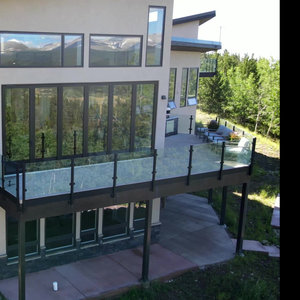A rather fine Grey Poplar specimen!
greenlarry
16 years ago
Related Stories

GARDENING GUIDESGreat Design Plant: Kumquats for a Juiced-Up Winter
Grow it for the edible fruit or its good looks alone. This citrus cousin will brighten any gray winter day
Full Story
KITCHEN DESIGN14 Indie Kitchen Designs That Stand Out From the Pack
Bored with white, cream and 50 shades of gray? Break out of the box with a daring kitchen that highlights your own style
Full Story
PLANTING IDEASGreat Garden Combo: 9 Plants for an Intriguing Entrance
Layer trees, flowers and shrubs around an archway to create the feeling of a year-round doorway to adventure
Full Story
GARDENING GUIDESTop 12 Summer-Blooming Perennials for Deer-Resistant Drama
Can you have garden color, fragrance and exciting foliage with hungry deer afoot? These beauties say yes
Full Story
POWDER ROOMSDream Spaces: 12 Ultraglam Powder Rooms
These luxurious loos show how extravagance can come through color, wall coverings, fixtures or just a simply beautiful concept
Full Story
GARDENING GUIDESGreat Design Tree: Australian Tea Tree
A living sculpture with an unmistakable appearance, this coastal native creates an intriguing landscape scene
Full Story
COLORHow to Pick the Perfect Accent Color
Not sure what colors go together in a room? Here are suggested combinations for different moods and effects
Full Story
KITCHEN CABINETSKitchen Cabinet Color: Should You Paint or Stain?
Learn about durability, looks, cost and more for wooden cabinet finishes to make the right choice for your kitchen
Full Story
GARDENING AND LANDSCAPINGWhat to Know Before You Buy Teak Outdoor Furniture
Learn about finishes, weathering, care and that age-old oil debate to get the teak furnishings that suit you best
Full Story
KITCHEN DESIGNKitchen of the Week: A Fresh Take on Classic Shaker Style
Quality craftsmanship and contemporary touches in a London kitchen bring the traditional look into the 21st century
Full Story









pineresin
greenlarryOriginal Author
Related Professionals
Accokeek Landscape Architects & Landscape Designers · Manorville Landscape Architects & Landscape Designers · Surprise Landscape Contractors · Cedar Hill Landscape Contractors · East Haven Landscape Contractors · Eustis Landscape Contractors · Lebanon Landscape Contractors · Methuen Landscape Contractors · Oak Harbor Landscape Contractors · Plymouth Landscape Contractors · Billings Siding & Exteriors · Cary Decks, Patios & Outdoor Enclosures · Cedar Falls Decks, Patios & Outdoor Enclosures · Kearns Decks, Patios & Outdoor Enclosures · Dent Stone, Pavers & ConcreteDibbit
greenlarryOriginal Author
treeguy123
pineresin
greenlarryOriginal Author
wisconsitom
Pamchesbay
greenlarryOriginal Author
pineresin
greenlarryOriginal Author
Dibbit